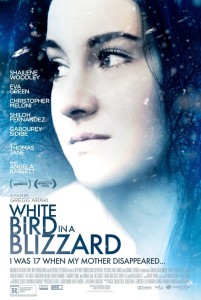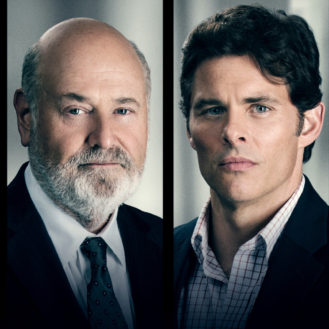White Bird in a Blizzard hits you with a wallop pivotal enough to make you concussed. You walk away having appreciated Gregg Araki’s latest film, but it doesn’t entirely settle well, and its difficult to come up with reasonings as to why.
Now thinking of it though, the Araki films I’ve caught (Mysterious Skin and Smiley Face) have had the same effect. Mysterious Skin is a distraught story of a troubled teenage hustler with a sensitive soul, but lacked caution when meeting up with Johns. Smiley Face is about a blitzed-out chick who’s only goal is to get to the beach. I like both of those movies and they’re incredibly different in tone, but their unique artistic approach is why they stuck with me. With both of these examples, this particular filmmaker has shown audiences that he has talent with serious stories and shallow dreams.
White Bird in a Blizzard is an attempt to bring Araki’s rawness into his fever dreams. The going gets tough with scenes that bounce from authentic family turmoil to live action dioramas, but somewhere within the film’s second act, Araki finds his groove.
The film allows time to flip back and forth. Flashbacks crash into the movie while our guard is down, and the film’s present time can abruptly step in at any moment. However, it’s never a hard story to follow.
Kat (played by Shailene Woodley) and her father Brock (played by Christopher Meloni) are distressed when Kat’s mother Eve (played by Eva Green) disappears without a trace. The police are brought in when Eve doesn’t touch base with Brock, but even their hired help Detective Scieziesciez (played by Thomas Jane) doesn’t see a bright future.
The audience witnesses Eve as a gentle wife prior to her hysterical epiphanies. Green overplays her role’s iciness, but still convincingly crafts her part as a workable, unpredictable housewife who slowly realizes how unhappy she is.
Woodley is very good as the angst-filled Kat and her ability to show frightened emotions towards her uneven mother while standing her defensive ground makes for a superb success for the actress. Meloni is the film’s MVP through his heartbreak and neutral readings. He continues to show how gifted a performer he is.
I wasn’t fully convinced of Gabourey Sidibe’s appearance in the film as Kat’s best friend. Her chemistry with their flamboyant buddy Mickey (played by Mark Indelicato) is decent, but I couldn’t buy her role otherwise. It’s a small role, but her aggressively snappy dialogue along with her loud wardrobe makes for a distraction. You don’t see a character, you see an out-of-place Sidibe.
While minor miscast roles got my goat, I suppose the other reason why White Bird in a Blizzard is a tough film to swallow stylistically is how Araki has chosen to deliver some of his more hard-hitting scenes. I can understand why most of the flashbacks to the 1950’s resemble a doll house’s staginess, but I couldn’t fathom why he had chose to shoot so wide during basement scenes. It’s a set that is almost an exact copycat of That 70’s Show, and for those moments, it feels as if we’re watching a jarring sitcom. The drama has a hard time remaining real.
A whodunit plot is gingerly brought in as the film is winding down. The screenplay (written by Araki, adapted from Laura Kasischke’s novel) dabbles enough in these mysteries to add a bit more enticement to this depressing story, and the suggestion that most of these questions will go unanswered is what makes us uncomfortably squirm. It’s then when we realize that White Bird in a Blizzard is a wound that just won’t heal.
Filmmaker Steven Sodebergh has similar moments of stylistic slip-ups when he’s experimenting with different types of framing. I expect the same with Araki’s confusing artistic decisions in this film. However, White Bird in a Blizzard is still worth seeking out. It’ll stay hot on your mind and give you plenty of chills.




Be the first to comment